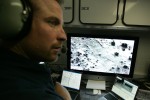 After quietly testing Predator drones over the Bahamas for more than 18 months, the Department of Homeland Security plans to expand the unmanned surveillance flights into the Caribbean and the Gulf of Mexico to fight drug smuggling, according to U.S. officials.
After quietly testing Predator drones over the Bahamas for more than 18 months, the Department of Homeland Security plans to expand the unmanned surveillance flights into the Caribbean and the Gulf of Mexico to fight drug smuggling, according to U.S. officials.
The move would dramatically increase U.S. drone flights in the Western Hemisphere, more than doubling the number of square miles now covered by the department’s fleet of nine surveillance drones, which are used primarily on the northern and southwestern U.S. borders.
But the high-tech aircraft have had limited success spotting drug runners in the open ocean.
The drones have largely failed to impress veteran military, Coast Guard and Drug Enforcement Agency officers charged with finding and boarding speedboats, fishing vessels and makeshift submarines ferrying tons of cocaine and marijuana to America’s coasts.
“The question is: Will they be effective? We have no systematic evidence on how effective they are,” said Bruce Bagley, who studies U.S. counter-narcotics efforts at the University of Miami in Coral Gables, Fla.
Despite that, a new control station will arrive this month in Corpus Christi, allowing Predators based there to cover more of the Gulf of Mexico.
An additional drone will be delivered this year to the U.S. Customs and Border Protection’s base in Cocoa Beach, Fla., for operations in the Caribbean.
The Federal Aviation Administration already has approved a flight path for the drones to fly more than 1,000 miles to the Mona Passage, the strait between Puerto Rico and the Dominican Republic.
“There is a lot more going on in the deep Caribbean, and we would like to know more,” said a law enforcement official familiar with the program who was not authorized to speak publicly. The official said drones may be based temporarily at airfields in the Dominican Republic and Puerto Rico.
The Predator B is best known as the drone used by the CIA to find and kill al-Qaida terrorists in Pakistan and Yemen. An unarmed version patrols the U.S. borders searching known overland smuggling routes.
On the ocean, however, there are no rutted trails or roads to follow. And the Predator cannot cover as much open water as larger, higher-flying surveillance aircraft, such as the Global Hawk.
“I’m not sure just because it’s a UAV (unmanned aerial vehicle) that it will solve and fit in our problem set,” the top military officer for the region, Air Force Gen. Douglas M. Fraser, said recently.
Fraser’s command contributes ships and manned surveillance airplanes to the Joint Interagency Task Force South. Last year, the task force worked with U.S. agencies and other countries to seize 119 metric tons of cocaine, valued at $2.35 billion.
For the recent counter-narcotics flights over the Bahamas, border agents deployed a maritime variant of the Predator B called a Guardian with a SeaVue radar system that can scan large sections of open ocean. Drug agents can check a ship’s unique radio pulse to identify the boat and owner.
The planned drone flights are partly a response to demands from leaders in the western Caribbean to shift more drug agents, surveillance aircraft and ships into the area, as cartels have switched from the closely watched U.S.-Mexico border to seaborne routes.
In the last four years, drug seizures in the Caribbean and the Gulf of Mexico have increased 36 percent, according to the Department of Homeland Security.
But test flights for the Guardian showed disappointing results in the Bahamas, according to two law enforcement officials familiar with the program who were not authorized to speak publicly.
During more than 1,260 hours in the air off the southeastern coast of Florida, the Guardian assisted in only a handful of large-scale busts, the officials said.
Source: http://www.mysanantonio.com/news/article/U-S-plans-more-drone-flights-over-Caribbean-3658048.php
